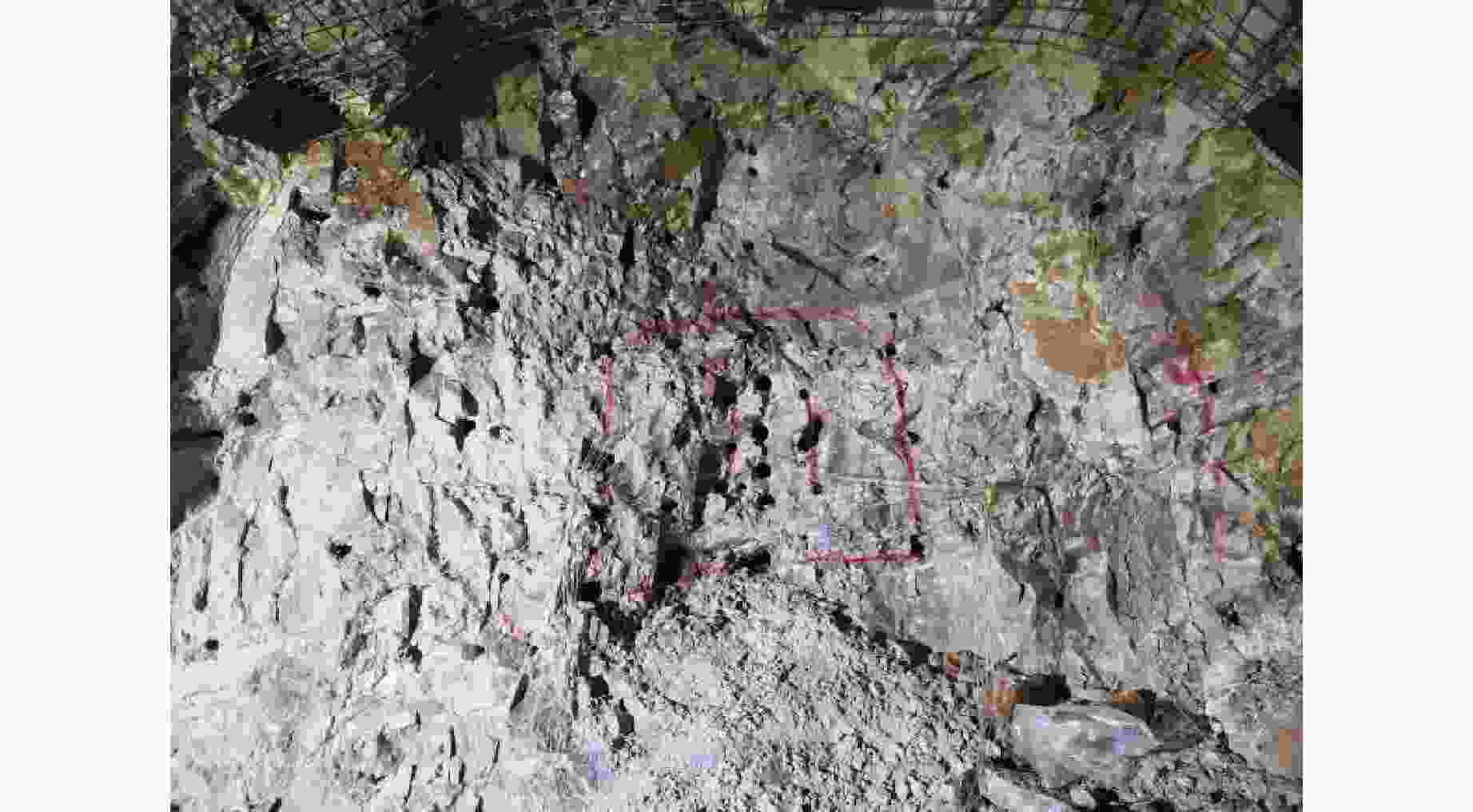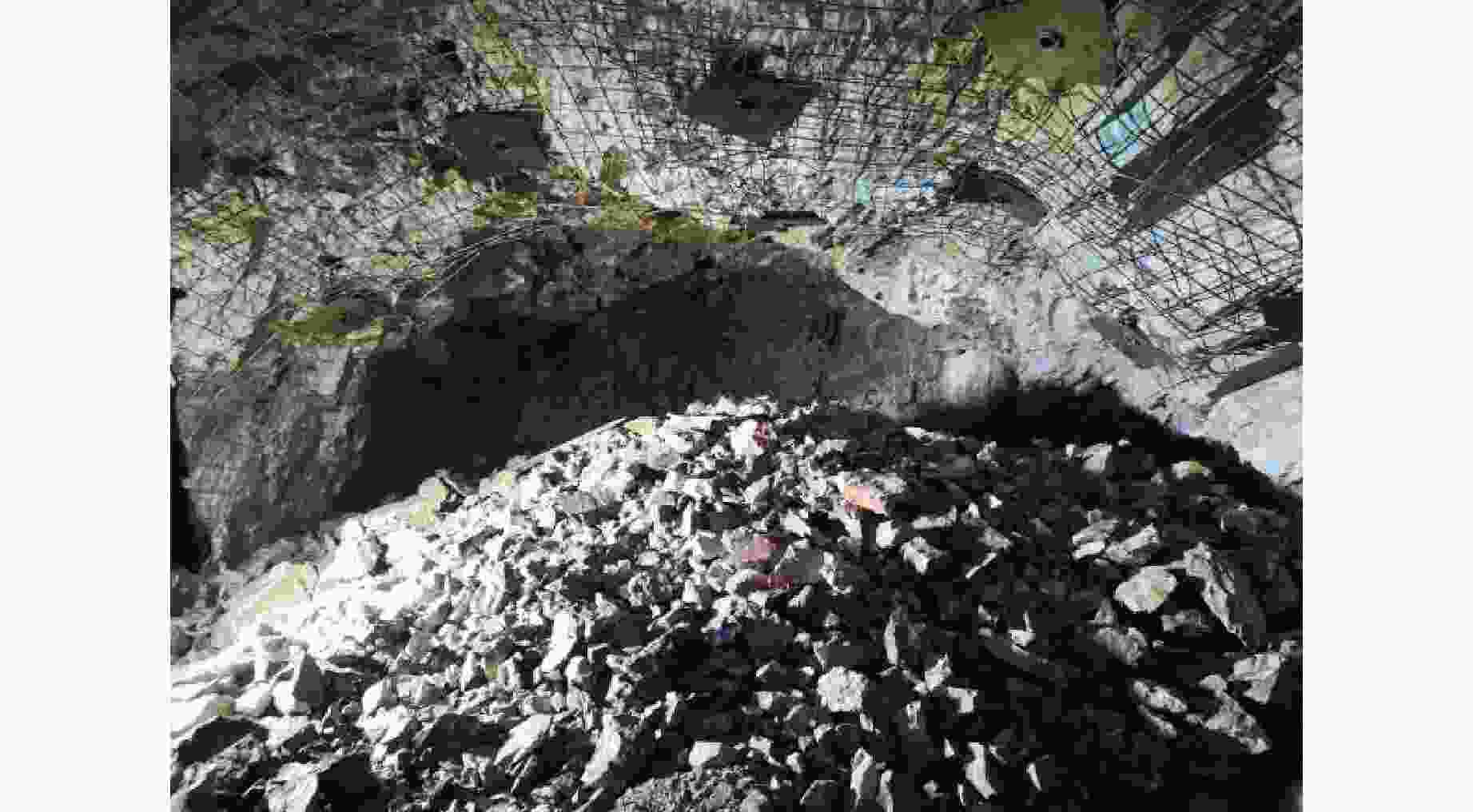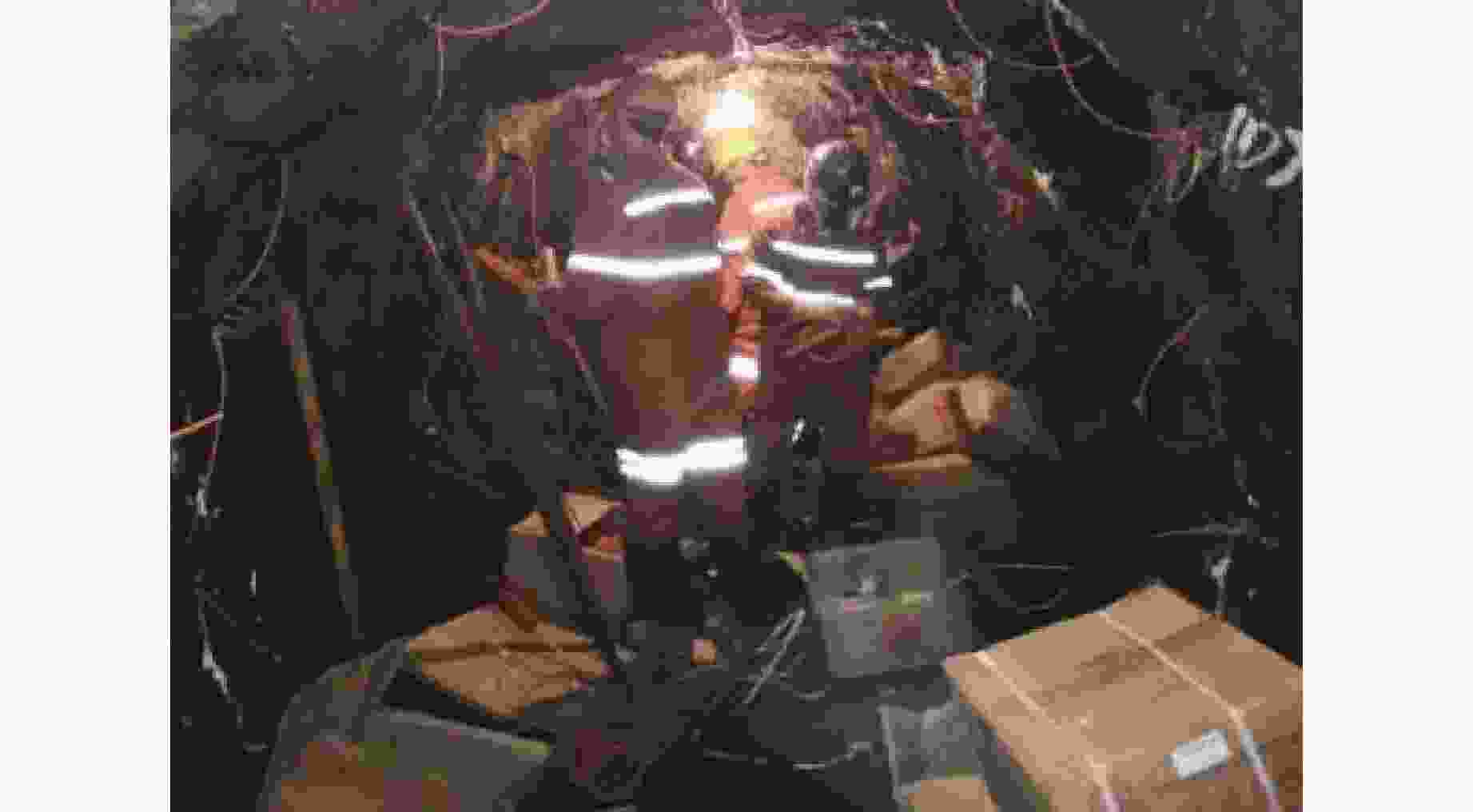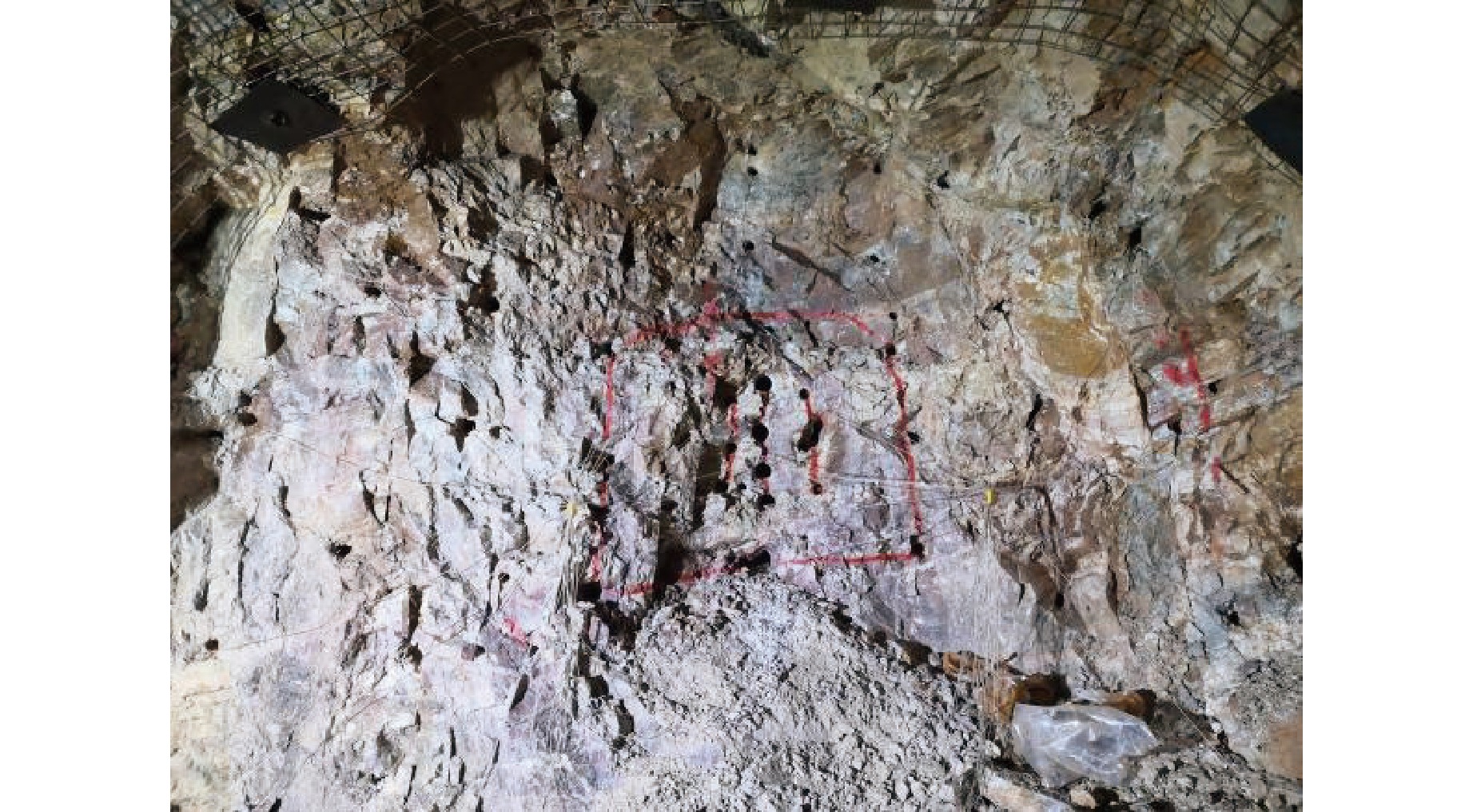Fuzzy Decision Theory of Rock Mass Explodability and Prediction of Explosive Unit Consumption
-
摘要: 为推进岩体可爆性分级后的进一步工程实际应用,利用回归分析方法分析可爆性指标的相关性,最终确定以岩体的抗拉强度、密度、脆性指数、完整性系数4个基本不相关的参数作为评级指标;通过正交试验设计确定各评级指标的敏感性,并确定其权重;运用模糊决策理论对岩体进行可爆性评级,采用评级指标结合岩体基本质量指数,推出地下采矿浅孔爆破的炸药单耗预测公式,进一步推导出可爆性等级对应的炸药单耗预测区间。结果表明:模糊决策方法为岩体可爆性评级提供了一种新思路,同时也证明了权重分配与评级指标选取的正确性。现场爆破试验证明了炸药单耗预测区间的合理性,研究结果可为生产爆破和类似工程实践提供一定的指导。Abstract: In order to promote the further practical application of rock mass explosivity classification in engineering, regression analysis method was used to analyze the correlation of explosivity indicators, and finally determine the four basically unrelated parameters of rock mass tensile strength, density, brittleness index, and integrity coefficient as rating indicators. The sensitivity of each rating index and its weight were determined using orthogonal design experiments. By using the method of fuzzy decision-making, the explosivity of rock mass was rated, and based on the rating index and the basic quality index of rock mass, a formula for predicting the explosive unit consumption of shallow hole blasting in underground mining was derived. The corresponding explosive unit consumption prediction interval for the explosivity level was further derived. This research shows that the fuzzy decision-making method provides a new approach for rock mass explosivity rating, and also proves the correctness of weight allocation and rating index selection. The on-site blasting test has proven the rationality of the predicted range of explosive unit consumption, which can provide certain guiding significance for production blasting and similar engineering practices.
-
表 1 岩石的抗拉强度和抗剪强度
Table 1. Tensile and shear strength of rocks
Rock category σt/MPa τ/MPa Rock category σt/MPa τ/MPa Magnetite ore 12 43 Migmatite 8.5 38 Chlorite schist 2.6 12 Quartz schist 7 16 Magnetite rich ore 11.5 40 Mixed metamorphic rock 4.81 21.66 Amphibolite 7.07 22 Mixed granite 12.93 47.85 k shell 8 32 Fault breccia 8.53 33.02 表 2 岩石的物理力学参数
Table 2. Physical and mechanical parameters of rock
Rock No. ρ/(g·cm−3) σt/MPa η B 1 2.618 9.30 0.767 12.74 2 2.674 14.25 0.760 5.46 3 3.810 5.85 0.510 16.20 4 2.710 7.05 0.410 22.70 5 2.646 14.62 0.780 4.40 6 2.588 7.61 0.830 5.27 7 2.919 15.33 0.793 3.94 8 2.631 9.71 0.763 16.55 9 3.418 16.30 0.230 11.87 10 3.029 21.04 0.197 7.27 11 2.725 14.98 0.480 8.01 12 3.479 18.26 0.779 10.55 表 3 相关性分析结果
Table 3. Correlation analysis results
Results β0 β1 R τ=0.3658+3.5369σt 0.3658 3.5369 0.8138 B=5.2149+2.0844ρ 5.2149 2.0844 0.0084 B=19.9728−0.7139σt 19.9728 −0.7139 0.2386 B=14.3477−5.4339η 14.3477 −5.4339 0.0273 表 4 正交设计各因素水平
Table 4. Levels of various factors in orthogonal design
Level ρ/(g·cm−3) σt/MPa B η 1 2.618 8.61 10.77 0.360 2 2.975 13.38 7.79 0.513 3 3.270 20.14 5.46 0.783 表 5 正交设计试验L9(34)
Table 5. Orthogonal design test L9(34)
Test No. Level ρ σt B η 1 1 1 1 1 2 1 2 2 2 3 1 3 3 3 4 2 1 2 3 5 2 2 3 1 6 2 3 1 2 7 3 1 3 2 8 3 2 1 3 9 3 3 2 1 表 6 正交试验设计结果
Table 6. Orthogonal design test results
Test No. ρ/(g·cm−3) σt/MPa B η Level[12] 1 2.618 8.61 10.77 0.360 2 2 2.618 13.38 7.79 0.513 4 3 2.618 20.14 5.46 0.783 5 4 2.975 8.61 7.79 0.783 7 5 2.975 13.38 5.46 0.360 3 6 2.975 20.14 10.77 0.513 4 7 3.270 8.61 5.46 0.513 6 8 3.270 13.38 10.77 0.783 6 9 3.270 20.14 7.79 0.360 5 K1 11 15 12 10 K2 14 13 16 14 K3 17 14 14 18 Range 2 0.667 1.333 2.667 Sensitiveness 2 4 3 1 表 7 可爆性分级标准
Table 7. Explosivity classification standards
Rock mass explosivity level ρ/(g·cm−3) σt/MPa B η Level Ⅰ 2.50 6.6 17.5 0.0494 Easiest Ⅱ 2.60 10.0 15.5 0.2555 Easy Ⅲ 2.75 13.0 13.3 0.3654 Easier Ⅳ 2.90 17.0 11.8 0.5122 Medium Ⅴ 3.16 20.0 9.5 0.6021 More difficult Ⅵ 3.30 23.0 6.0 0.7122 Difficult Ⅶ 3.45 26.0 3.5 0.8232 Most difficult 表 8 可爆性分级结果
Table 8. Explosion classification results
Rock No. Proposed method Attribute recognition method Entropy weight theory method 1 Ⅳ Ⅲ Ⅲ 2 Ⅳ Ⅲ Ⅲ 3 Ⅳ Ⅴ Ⅴ 4 Ⅴ Ⅴ Ⅵ 5 Ⅴ Ⅴ Ⅴ 6 Ⅳ Ⅳ Ⅳ 7 Ⅴ Ⅳ Ⅴ 8 Ⅵ Ⅵ Ⅵ 9 Ⅵ Ⅵ Ⅵ 10 Ⅴ Ⅵ Ⅶ 11 Ⅵ Ⅵ Ⅵ 12 Ⅵ Ⅵ Ⅵ f q/(kg·m−3) f q/(kg·m−3) 0–4 0.25–0.65 10–15 1.60–2.60 5–8 0.65–1.00 >15 >2.80 8–10 1.00–1.60 表 10
$BQ $ 与炸药单耗Table 10.
$BQ $ and explosive unit consumptionBQ q/(kg·m−3) BQ q/(kg·m−3) ≤250 0.25–0.65 451–550 1.60–2.60 251–350 0.65–1.00 >551 >2.80 351–450 1.00–1.60 表 11 炸药单耗与
$BQ $ 拟合结果Table 11. Fitting results of explosive unit consumption and
$BQ $ Result β0 β1 R qll=–0.6180+0.0055BQ –0.6180 0.0055 0.9629 qul=–0.7425+0.0075BQ −0.7425 0.0075 0.9425 表 12 岩石的
$BQ $ Table 12. Rock
$BQ $ Rock No. BQ Rock No. BQ 1 588 7 479 2 523 8 588 3 455 9 309 4 403 10 597 5 489 11 440 6 428 12 595 表 13 评级与炸药单耗计算结果
Table 13. Rating and explosive unit consumption calculation results
Level Number q/(kg·m−3) Level Number q/(kg·m−3) Ⅰ 0 <0.77 Ⅴ 12 1.91–2.71 Ⅱ 3 0.77–1.22 Ⅵ 5 2.48–3.49 Ⅲ 8 1.17–1.69 Ⅶ 0 >3.49 Ⅳ 11 1.58–2.26 表 14 岩矿试样的物理参数
Table 14. Physical parameters of rock specimen
Rock type ρ/(g·cm−3) σt/MPa B η Marble 2.72 4.66 12.9 0.566 Oxidized ore 2.47 4.86 15.1 0.156 -
[1] 坦加耶夫 И А. 岩石的可钻性和可爆性 [M]. 王伟德, 周树良,译. 北京: 冶金工业出版社, 1987: 55–113.TANGAYEV И А. Drillability and explosive of rock [M]. Translated by WANG W D, ZHOU S L. Beijing: Metallurgical Industry Press, 1987: 55–113. [2] 张强. 岩体爆破性分级研究进展 [J]. 工程爆破, 1998, (3): 75–79,35.ZHANG Q. Advance in study on rock blastability classification [J]. Engineering Blasting, 1998, (3): 75–79,35. [3] XIAO S S, LI K M, DING X H, et al. Rock mass blastability classification using fuzzy pattern recognition and the combination weight method [J]. Mathematical Problems in Engineering, 2015, 12: 724619. [4] OZGUR Y. Rock factor prediction in the Kuz-Ram model and burden estimation by mean fragment size [J]. Geomechanics for Energy and the Environment, 2023, 33: 100415. doi: 10.1016/j.gete.2022.100415 [5] 张紫晗, 胡光球, 郑建礼, 等. 基于脆性指数和熵权理论的岩体可爆性分级方法 [J]. 工程爆破, 2021, 27(5): 65–71.ZHANG Z H, HU G Q, ZHENG J L, et al. Rock blastability classification method based on brittleness index and entropy weight theory [J]. Engineering Blasting, 2021, 27(5): 65–71. [6] 史涵虚, 周传波, 蒋楠, 等. 魏家峁煤矿区深孔台阶剥离爆破施工岩体可爆性分析 [J]. 爆破, 2023, 40(1): 37–44.SHI H X, ZHOU C B, JIANG N, et al. Analysis on rock mass explosibility during deep-hole bench stripping by blasting in Weijiamao coal mine area [J]. Blasting, 2023, 40(1): 37–44. [7] 王文军, 李润然, 纪旭波, 等. 黑沟矿区露天开采矿岩可爆性分级研究 [J]. 金属矿山, 2021(4): 64–69.WANG W J, LI R R, JI X B, et al. Blastability classification of open pit mining in heigou mining area [J]. Metal Mine, 2021(4): 64–69. [8] WU S L, YANG S, WANG Q Y. Classification of open pit iron mine rock mass blastability based on concept lattice and rough set [J]. Geotechnical and Geological Engineering: An International Journal, 2020, 38(1): 449–458. doi: 10.1007/s10706-019-01036-3 [9] ZHOU T, HU H J, KUANG Y, et al. Improved rock engineering system (RES)-multidimensional cloud evaluation model and its application to the rock mass blastability [J]. IEEE Access, 2019, 7: 100305. doi: 10.1109/ACCESS.2019.2930629 [10] ALIPOUR A, MOKHARIAN M, CHEHREGHANI S. An application of fuzzy sets to the blastability index (BI) used in rock engineering [J]. Periodica Polytechnica Civil Engineering, 2018, 62(3): 580–589. [11] 冯夏庭. 岩石可爆性神经网络研究 [J]. 爆炸与冲击, 1994, 14(4): 298–306.FENG X T. A study on neural network on rock blastability [J]. Explosion and Shock Waves, 1994, 14 (4): 298–306. [12] 马红贝, 赵国彦, 路凡. 岩体可爆性分级评价的集对分析模型 [J]. 爆破, 2016, 33(2): 28–31, 38.MA H B, ZHAO G Y, LU F. Set pair analysis model for rock blastability classification estimation [J]. Blasting, 2016, 33(2): 28–31, 38. [13] 白玉奇, 李振阳, 李传增, 等. 基于CRITIC-Vague模型的岩体可爆性评价 [J]. 金属矿山, 2020(12): 27–32.BAI Y Q, LI Z Y, LI C Z, et al. Assessment for rock mass blastability based on CRITIC-Vague model [J]. Metal Mine, 2020(12): 27–32. [14] 丁小华, 原文杰, 解祯, 等. 基于综合赋权云模型的露天矿岩体可爆性分级识别 [J]. 煤炭科学技术, 2019, 47(10): 96–101.DING X H, YUAN W J, XIE Z, et al. Classification and identification of rock blastability in open-pit mine based on comprehensive weighted cloud model [J]. Coal Science and Technology, 2019, 47(10): 96–101. [15] 刘恩龙, 沈珠江. 岩土材料的脆性研究 [J]. 岩石力学与工程学报, 2005, 24(19): 51–55.LIU E L, SHEN Z J. Study on brittleness of geomaterials [J]. Chinese Journal of Rock Mechanics and Engineering, 2005, 24(19): 51–55. [16] 璩世杰, 辛明印, 毛市龙, 等. 岩体可爆性指标的相关性分析 [J]. 岩石力学与工程学报, 2005, 24(3): 468–473.QU S J, XIN M Y, MAO S L, et al. Correlation analyses of blastability indexes for rock mass [J]. Chinese Journal of Rock Mechanics and Engineering, 2005, 24(3): 468–473. [17] 潘勇, 杨天祥. 岩体可爆性分级的神经网络判别方法 [J]. 现代矿业, 2013, 29(1): 21–23.PAN Y, YANG T X. Neural network discriminant method of rock blasting classification [J]. Modern Mining, 2013, 29(1): 21–23. [18] 璩世杰, 齐宝军, 许文耀, 等. 水厂铁矿岩体可爆性分级方法与应用 [J]. 金属矿山, 2009, 39(11): 25–27, 178.QU S J, QI B J, XU W Y, et al. Rock mass blastability classification and its application in shuichang open pit mine [J]. Metal Mine, 2009, 39(11): 25–27, 178. [19] 张德明, 王新民, 郑晶晶, 等. 基于模糊综合评判的矿岩体可爆性分级 [J]. 爆破, 2010, 27(4): 43–47.ZHANG D M, WANG X M, ZHENG J J, et al. Blastability classification of rock and mine based on fuzzy comprehensive evaluation [J]. Blasting, 2010, 27(4): 43–47. [20] 高成宇. 巴鲁巴铜矿基于加权聚类分析的岩体可爆性分级 [J]. 铜业工程, 2014(2): 28–31.GAO C Y. Rock-mass blastability classification of baluba copper mine based on weighted clustering analysis [J]. Copper Engineering, 2014(2): 28–31. [21] 李蓉, 宋娟, 何永延. 基于属性识别理论的岩体可爆性分级方法 [J]. 金属矿山, 2008, 38(5): 32–34,48.LI R, SONG J, HE Y Y. Classification for rockmass blastability based on attribute recognition theory [J]. Metal Mine, 2008, 38(5): 32–34,48. [22] 汪旭光. 爆炸设计与施工 [M]. 第2版. 北京: 冶金工业出版社, 2011: 303–305.WANG X G. Explosion design and construction [M]. 2nd ed. Beijing: Metallurgical Industry Press, 2011: 303–305. [23] 长江水利委员会长江科学院. 工程岩体分级标准: GB/T 50218—2014 [S]. 北京: 中国计划出版社, 2015. -







 下载:
下载:











